Regular car maintenance is essential for keeping your vehicle running smoothly and safely on the road. According to AAA’s automotive experts, following a comprehensive maintenance schedule can extend your car’s life by years while preventing costly repairs down the line. From checking fluid levels to inspecting tire pressure, a well-planned maintenance routine helps identify potential issues before they become serious problems, ultimately saving you time and money.
Whether you’re a new car owner or a seasoned driver, understanding your vehicle’s maintenance needs is crucial for optimal performance. The Car Care Council’s official guide to vehicle maintenance recommends creating a seasonal checklist that includes monthly, quarterly, and annual tasks. By staying proactive with regular inspections and timely service intervals, you can ensure better fuel efficiency, maintain your car’s resale value, and most importantly, keep yourself and your passengers safe on the road. This comprehensive car maintenance checklist will help you stay on top of essential maintenance tasks, potentially saving you thousands in costly repairs.
Monthly Car Maintenance Checklist
Performing these quick monthly inspections can help you catch potential issues early:
Tire Pressure and Condition
Check your tire pressure when the tires are cold, and inspect for unusual wear patterns or damage. If your car tires are properly inflated, it can improve the fuel efficiency of your car. It also ensures even tire wear.
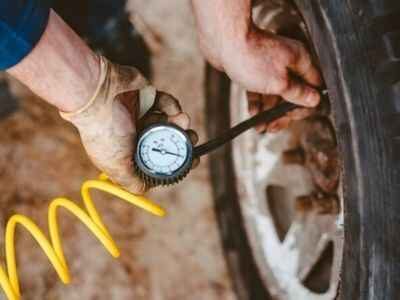

Oil Level and Condition
Check the oil level with the dipstick when the engine is cold and parked on level ground. The engine oil level of your car should be between the minimum level and maximum level markers. The engine oil should appear clean, and not dark.
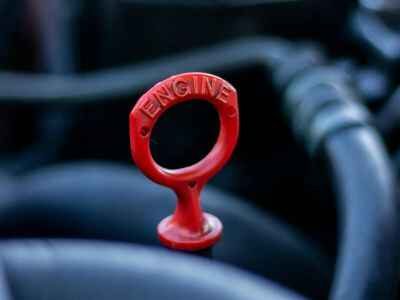

All Exterior Lights
Verify that all lights, including headlights, brake lights, turn signals, and hazard lights, are functioning correctly. Replace any burnt-out bulbs immediately.




Quarterly Car Maintenance Checklist
Every three months or 3,000-5,000 miles, consider these important checks:
Fluid Levels
You should check and maintain Engine oil, Coolant, Power steering fluid, Brake fluid, Windshield washer fluid, and Transmission fluid (if applicable) quarterly.
Battery Health
Check if there is any corrosion on the terminals of your battery. Also always keep the connections tight. Modern batteries typically last 3-5 years.
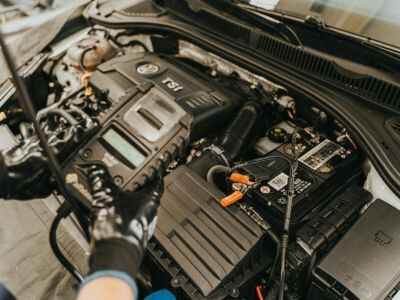

Windshield Wipers
Inspect wiper blades for cracks or wear. Replace them if they leave streaks or miss spots while operating.


Semi-Annual Checks
Perform these maintenance tasks every six months:
Brake System
Listen for unusual sounds and pay attention to how the brake pedal feels. If you notice any issues, have a professional inspect brake pads and rotors.
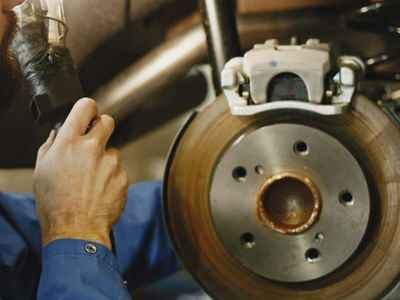

Air Filters
Check both engine and cabin air filters. Clean or replace them as needed to maintain proper airflow and filtration.


Belts and Hoses
Inspect all belts and hoses for cracks or looseness. Replace any that show signs of wear.
Annual Maintenance
Schedule these tasks yearly:
Oil Change and Filter Replacement
Follow your vehicle manufacturer’s recommended oil change intervals, typically between 5,000 and 7,500 miles for modern vehicles using synthetic oil.
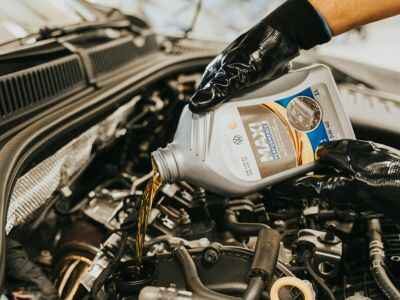

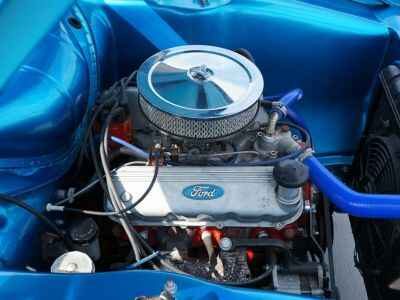

Tire Alignment
A tire alignment is a crucial maintenance service that fine-tunes your vehicle’s suspension components to ensure optimal wheel positioning. This professional exact adjustment ensures each tire stands at the appropriate angle relative to the road and other tires. While tire rotation involves moving tires to different positions on your vehicle, alignment adjusts how those tires contact the road surface. These services help maximize tire life, improve handling, and ensure your vehicle drives straight and true.
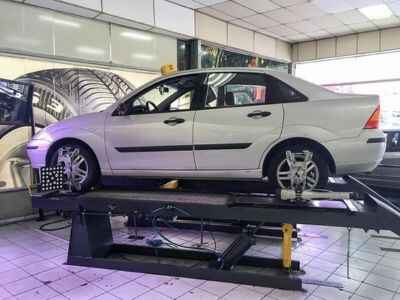

Think of it this way: rotation helps tires wear evenly by changing their position, while alignment ensures they’re making proper contact with the road at all times. When both are properly maintained, you’ll experience:
- Better fuel efficiency
- More even tire wear
- Improved handling and stability
- Reduced strain on suspension components
- Safer driving conditions
You should remember that if you notice your vehicle pulling to one side or your steering wheel isn’t centered when driving straight, these are common signs that you may need an alignment check.
Tire Balancing
Tire balancing is a vital maintenance service that ensures each wheel-tire assembly rotates without vibration or wobble. During this process, technicians add small weights to counteract any uneven weight distribution in the tire and wheel combination. While tire rotation involves moving tires to different positions on your vehicle, balancing ensures each tire spins smoothly at any speed.
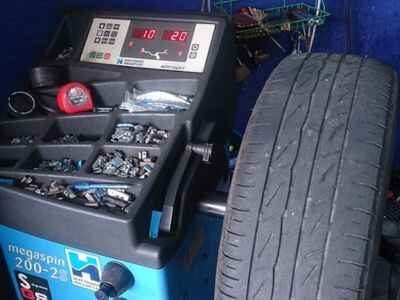

These services complement each other by:
- Preventing steering wheel vibration
- Reducing uneven tire wear
- Protecting suspension components
- Improving ride comfort
- Maximizing tire life
Think of it like balancing a ceiling fan – when weights aren’t distributed properly, you feel uncomfortable vibrations. The same principle applies to your tires. If you notice vibrations that increase with speed or a rough ride, these could be signs that your tires need balancing. For best results, have your tires balanced whenever they’re rotated or when new tires are installed.
Remember: proper tire maintenance requires both regular rotation and balancing to keep your vehicle running smoothly and safely.
Tire Rotation
You should rotate your car tires in a specific manner in every 5,000 to 7,500 miles. Also, you should follow your owner’s manual instructions for proper tire rotation patterns. Regular rotation helps distribute wear evenly across all four tires, maximizing their lifespan and maintaining optimal traction for safer driving. You should alternate the front and rear tires in a specific pattern. It may vary depending on whether your vehicle is front-wheel, rear-wheel, or all-wheel drive.
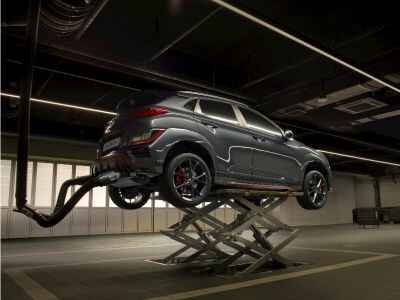

Some important tips for tire rotation:
- Keep a log of when rotations are performed
- Check tire pressure after rotation
- Inspect tires for unusual wear patterns during rotation
- Consider having alignment checked if you notice uneven wear
You should remember that proper tire maintenance not only extends tire life but also improves fuel efficiency and vehicle handling. For best results, combine regular rotations with correct tire pressure and wheel alignment.
Read the article “Why Tire Rotation is Important And How to Rotate Your Tires Properly?” to learn more about tire rotation.
HVAC System
Test both heating and air conditioning systems. Have the AC refrigerant checked and topped off if necessary.
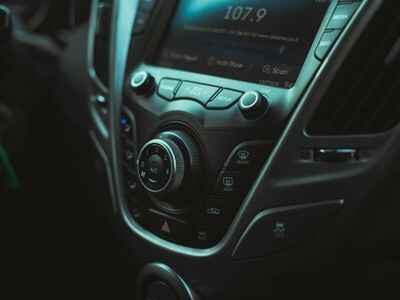

Mileage-Based Maintenance
Keep track of these important service intervals:
30,000 Miles
- Replace the air filter
- Replace the power steering fluid
- Service fuel filter
- Inspect spark plugs
60,000 Miles
- Replace the timing belt (if applicable)
- Replace brake fluid
- Service transmission
- Replace spark plugs
Pro Tips for Maintenance Success
Keep Detailed Records
Maintain a log of all maintenance performed on your vehicle, including dates, mileage, and services completed.
Follow Manufacturer Guidelines
Always consult your owner’s manual for specific maintenance schedules and requirements for your vehicle model.
Address Issues Promptly
Don’t delay repairs when you notice problems. If you leave any small issue unattended, it can become expensive repairs.
Find a Trusted Mechanic
Develop a relationship with a reliable mechanic who knows your vehicle’s history and can provide consistent service.
Warning Signs to Never Ignore
Pay attention to these indicators that your vehicle needs immediate attention:
Unusual Noises
Squealing during braking
Usually indicates worn brake pads that need replacement
Grinding when braking
Metal-on-metal contact, suggesting completely worn brake pads
Clicking when turning
When there is a faulty CV joint or the power steering fluid is low.
Knocking from the engine
Might indicate serious engine problems like rod knock
Humming/whining
Often points to failing wheel bearings or transmission issues
Warning Lights on Dashboard
Check Engine Light
Could indicate various issues from a loose gas cap to serious engine problems
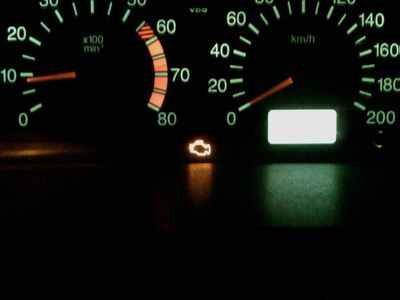

Oil Pressure Light
Signals dangerous low oil pressure – stop driving immediately
Battery Light
Indicates charging system problems
ABS Light
Anti-lock brake system malfunction
The Airbag Light
Safety system requires inspection
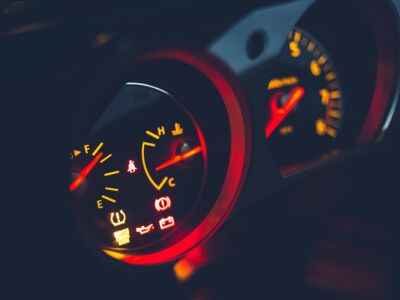

TPMS Light
Tire Pressure Monitoring System warning about low tire pressure
Vibrations While Driving
Steering wheel vibration
Often indicates unbalanced tires or alignment issues
Vibration at certain speeds
Could be tire balance or worn suspension components
Vibration when braking
Likely warped brake rotors
Whole car shaking
Might be engine misfiring or serious transmission problems
Decreased Fuel Efficiency
A sudden drop in Mile Per Gallon (MPG) could happen if you have the following problems in your car.
Failing oxygen sensor
The oxygen sensor monitors exhaust gases and helps adjust the fuel mixture. When it fails, it can cause the engine to use too much fuel. Failure of oxygen sensor can reduce fuel efficiency of your car by up to 40%. It often triggers a check engine light.
Dirty air filter
Dirty air filters will decrease your fuel efficiency. It restricts airflow to your engine. This air filter pressurizes the engine to work harder. That is why more fuel is used. Dirty filters can reduce fuel efficiency by up to 10%. That is why changing the air filter is mandatory car maintenance work. It is very easy and inexpensive to change your car’s air filters.
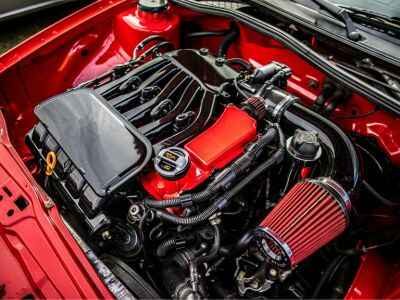

Bad spark plugs
Check all the spark plugs regularly because worn plugs can’t properly ignite the fuel mixture. As a result, combustion is incomplete and the fuel is wasted unnecessarily. It can reduce the fuel efficiency of your car by up to 30%. It may cause engine misfiring or rough idling. Change them if necessary and try to buy good spark plugs. Branded spark plugs will cost you money but will make your life easy.
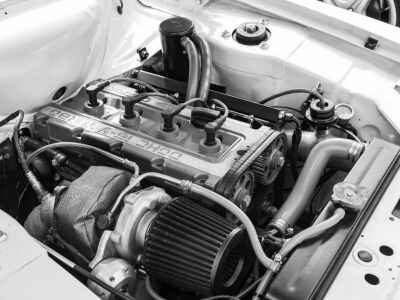

Improper tire pressure
The tire pressure of your car tires can be checked easily with a proper tire pressure gauge. Always keep your tires properly inflated because underinflated tires increase rolling resistance. It can reduce fuel efficiency by about 3% for every 1 PSI below the recommended pressure. It also causes uneven tire wear but it is very easy to check and fix. You can do it by yourself!
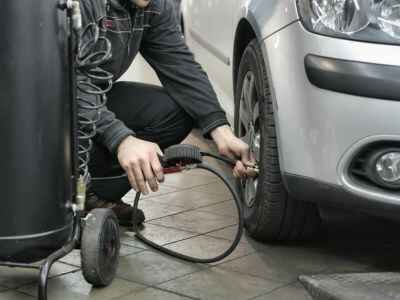

Fuel system problems
It occur because of clogged fuel injectors, dirty fuel filters, and bad fuel pumps. These car parts prevent proper fuel delivery to the engine of your car. This problem of fuel system can make your car fuel inefficient. So, repair them or change the parts quickly.
Dragging Brakes
It means brake calipers or pads are not fully released. It creates constant resistance and your car will not run properly. It can significantly impact the fuel efficiency of your car. Dragging brakes often accompanied by a burning smell and hot wheels. Change brakes immediately if you see these signs.
Fluid Leaks
Red or Pink Fluid
Transmission fluid: Usually means failing transmission seals or cooler lines
Power steering fluid: This could indicate rack and pinion leaks beneath your car. It also shows a failing pump.
Location matters: Front (power steering), middle/rear (transmission)
Urgency: High – address immediately to prevent transmission damage
Green/orange fluid
Engine coolant/antifreeze: Common leak points of engine coolant/antifreeze are radiator cracks, loose hose connections, failed water pump, and blown head gasket.
Urgency: Very high – can lead to overheating and engine failure
Dark brown/black fluid
Engine oil: This fluid can be seen for damaged oil pans, worn gaskets, failed seals, and loose drain plugs.
Urgency: High – low oil levels can destroy the engine
Clear fluid (while AC is running)
- Usually normal AC condensation
- Should only occur when AC is running
- If sweet-smelling, could be coolant
Light brown fluid
Brake fluid: It’s an extremely serious safety concern for your car. Brake fluid can be seen if there is a failed brake line, worn brake caliper seals, and master cylinder problems.
Urgency: Immediate – affects braking ability
Strange Odors
Sweet, syrupy smell
It always indicates a coolant leak in your car. It becomes strongest when the engine is warm and is also often accompanied by white smoke.
This kind of smell means that the radiator is leaking. It also indicates that the head gasket of your car is blown or the cylinder head is cracked.
Burning oil smell
You can smell burning oil when oil is leaking onto hot engine parts. It became stronger during acceleration.
It occurs when 1) The valve cover gasket leaks, 2) The oil filter is not sealed properly, 3) The oil plugs are loose, and 4) The major engine seal fails.
Rotten egg smell
When there is a failed catalytic converter you will smell like a rotten egg. You will also get the sulfur smell from the fuel system.
It could indicate 1) A rich fuel mixture, 2) The engine running too hot, and 3) Emission system problems.
Burning rubber
You will smell like burning rubber when there are belt problems, clutch issues (manual transmission), and hoses touching hot engine parts. It can lead to breakdown if not repaired properly.
Gas smell
It is the most dangerous warning sign. It happens when 1) The fuel line leaks, 2) A failed fuel injector, 3) The gas cap problem occurs, and 4) The Evap system fails. You should repair it immediately or serious fire hazards may occur.
Burning carpet smell
This smell usually indicates overheating brakes. It could mean that 1) The brake caliper is stuck, 2) The brake pads are worn, or 3) the emergency brake is engaged.
The key takeaway is that any of these signs shows up, go and visit a qualified mechanic. Ignoring these warning signs often leads to more expensive repairs later, potential safety hazards, reduced vehicle reliability, and lower resale value of your car.
Conclusion
Following this car maintenance checklist will help keep your vehicle running smoothly and reliably for years to come. Regular maintenance not only prevents costly repairs but also maintains your car’s value and ensures your safety on the road. Remember to adjust this schedule based on your vehicle’s specific needs and manufacturer recommendations.


